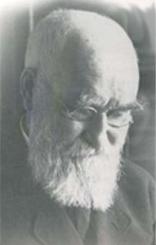John Macoun
Dean
of Canadian Naturalists 1831-1920
It became a ritual.
Each fall, John Macoun would return from western Canada and brief government
officials about his latest discoveries. But 1881 was different. At the
conclusion of his meeting with the Deputy Minister of the Interior, Macoun
was named Dominion Botanist. The appointment was confirmed in a short private
interview with the Prime Minister. At age 50, when most people of his generation
contemplated retirement, Macoun had attained his life-long dream.
That John Macoun
was named Canada’s first Dominion Botanist was a testament to his infectious
energy and stubborn determination. Fatherless from the age of six, nineteen-year-old
John had immigrated in 1850 from famine-riddled Northern Ireland to Canada
West. While working in the fields and forests of backwoods Ontario, John
took an interest in the local flora that rapidly evolved into a serious
study of Canadian botany. Never satisfied as a farmer, he trained as a
teacher so that he could devote every spare moment to his plants. He would
take a new or unusual specimen, try to identify it using the few books
at hand, and then add it to his ever-expanding private herbarium. This
painstaking self-study, together with his exhaustive field work and growing
correspondence with leading botanists in Great Britain and the United States,
established his reputation as an expert on the local flora and resulted
in his appointment, in 1868, as chair of natural history at Belleville’s
Albert College.
The turning point
in Macoun’s career came, however, during one of his summer collecting trips
when he met, by coincidence, Sandford Fleming in the Owen Sound district
in 1872. Fleming, Canadian Pacific Railway engineer-in-chief, was headed
west to assess the proposed Yellowhead Pass route for the new transcontinental
railway. He invited Macoun, or “the Professor” as he was popularly known,
to come along. Over the next decade, during five separate exploratory surveys
between 1872 and 1881, Macoun examined the farming potential of the prairies,
concluding that all of the North-West, including the semi-arid southern
plains, was an agricultural Eden. This endorsement of the region’s future
dovetailed with Ottawa’s great expectations and made Macoun the darling
of the government – hence his reward as Dominion Botanist.
Macoun tackled his
duties with missionary zeal – so much so that, within six years, he was
appointed Survey Naturalist. A confirmed anti-Darwinist, Macoun believed
that a natural scientist should be a kind of jack-of-all-trades whose role
was to assemble an inventory of God’s wondrous bounty. He spent as much
time as possible in the field each season, gathering any living thing he
chanced upon – plants, birds, mammals, fish, even insects – in the hope
of discovering species new to science. Someone stumbling upon his campsite,
with his day’s collection strewn about in various stages of preparation,
might have mistaken it for a kind of devil’s workshop.
 |
John
Macoun was appointed chair of natural history when Albert College was founded
in 1868 in Belleville, Ontario. An internationally renowned botanist, Macoun,
who was self-taught, built up massive collections of flora and fauna from
his 19th century trans-Canada excursions. By systematically classifying
his specimens, he left a national botanical treasure for the study and
speculation of future generations. [Photo, courtesy National Museums of
Canada/Neg. No. 31874] |
What drove Macoun
during his 30-year career at the Survey, what kept him constantly on the
move, despite his age, was a belief in the profound importance of his work
to the young Dominion. He believed his duty was to provide practical information
on Canada’s great resource heritage, information that could be used for
development purposes. Whether examining the Yukon, the Alberta foothills,
or remote Sable Island on the Atlantic, he always returned to Ottawa heavily
laden with specimens. His enthusiasm for his work knew no bounds.
Macoun’s feverish
pace came to an end in 1912 when he suffered a stroke. Retiring to Vancouver
Island, he remained active, continuing to collect along the ocean when
not completing his autobiography. When he died in 1920, in his ninetieth
year, natural scientists around the world mourned the passing of the dean
of Canadian naturalists.
Macoun’s career had
a profound influence in the development of life sciences. Without his tenacity
and drive, it is unlikely that the Geographical Survey of Canada would
have engaged in natural history to the extent that it did. Thanks to his
ability to apply his naturalist skills to practical ends, scientific research
came to be regarded as a legitimate government-funded activity. Macoun’s
wide-ranging field collections also figured in the early twentieth century.
His natural history collection reached such proportions that the Canadian
government found itself custodian of a “national collection.”
Macoun’s greatest
legacy was as a field naturalist. He collected widely and thoroughly, usually
labouring from dawn to dusk. Few obstacles deterred him. In the process,
he developed an unrivalled knowledge of Canada’s natural life and could
recognize new species at sight, many of which were named after him. What
was perhaps most amazing was the range of territory he covered: he literally
tramped tens of thousands of miles over all kinds of terrain. His collections,
moreover, not only were the first extensive ones made in a particular area
but, in many instances, were made before the natural environment was disturbed.
John Macoun singlehandedly rolled back the natural history frontiers of
Canada.
Bill Waiser